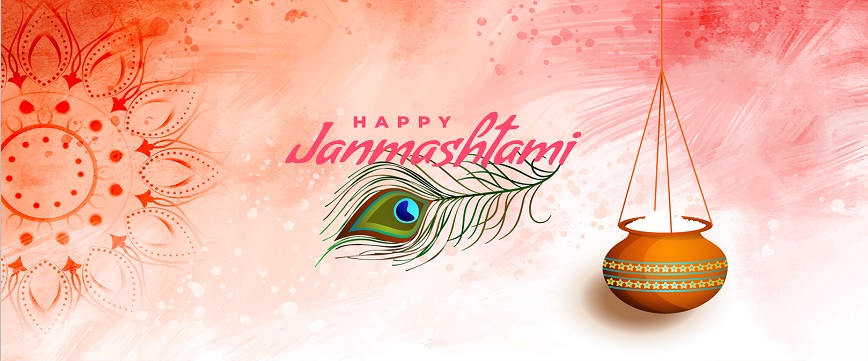
Janmashtami, more popularly known as Krishna Janmashtami is the birthday of Lord Krishna which is celebrated with great fervour and zeal in India during the monsoon month. If we go by the Hindu calendar, this important day falls on the Ashtami, the eighth day of the Krishna Paksha, or the dark fortnight of Bhadon month. No one knows when this festival originated! Maybe a thousand years back this festival found its foothold in our culture. One would come across various legendary stories and myths encircling the birth of Janmashtami.
Among all of them, the most widely accepted view is that Lord Krishna is the eighth incarnate of Lord Vishnu. We all have known from Mahabharata that the birth of Lord Krishna happened to kill the demon Kansa who happens to be his maternal uncle. Whenever there is some imbalance in the universe regarding peace and prosperity, it is that Lord Vishnu comes to save humanity from the hands of demons and goons.
Historians and scholars say that Lord Krishna took birth in a cellular jail in Dwapar Yug biologically to Vasudeva and Devaki. But Vasudeva had to cross the Yamuna River on a stormy night to pass on his child to a friend to save the child from the evil hands of Kansa, so technically, Maiya Yashoda and Nanda of Gokul region of Mathura were the foster parents of Lord Krishna.
Now Lord Krishna was a wonder child and his skills had been noticed since childhood. People started believing that this small boy named Krishna was among the commoners to save them from all tumultuous situations. Slowly, the people of Nandgaon started celebrating the birth of Krishna in a grand way as they believed this day to be a fortunate one.
We can say that this festival was initially organized in Gokul and slowly engulfed the Mathura region and later on the whole Uttar Pradesh state. And now even after 1000 years, the whole country celebrates the birth of Lord Krishna as he is the epitome of love, faith, friendship, and peace.
The tale of Mahabharat has a lot to do with the life of Lord Krishna. During the Dharma Yuddha or righteousness between Pandavas and Kauravas, Lord Krishna played the charioteer of Arjuna. He was counselling Arjuna on various segments of life like Dharm, Karma Theistic Devotion, yogic ideals, salvation, knowledge, etc. because Arjun was in emotional turmoil about killing his brothers and cousins. The verses mentioned in this book are often called a life guide or spiritual dictionary. Lord Krishna stated that whenever there is prominence of evil deeds in this universe, he will reincarnate in various looks and attire to show the path of right and peace from person to person. The sole reason for celebrating this festival is to bring people together so that principles of unity strengthen.
Dahi Handi is another important aspect of this festival that is observed on the second day of Janmashtami. As a kid Lord Krishna was named “Makhanchor” or the one who steals butter. He used to steal butter from every household of Gokul. Dahi Handi is an event where the same butter-stealing activity of Lord Krishna is narrated. An earthen pot of Handi is filled with butter, clarified butter or ghee, dry fruits, and milk suspended at a considerable height with the help of ropes. All the local young guys gather to make a human pyramid and climb on each other to reach the Handi and break it. This is an activity that teaches teamwork principles.
We celebrate many festivals throughout the year in different styles. Every festival is unique, read about the most popular festivals of India like Jagannath Rath Yatra History, Date, time, Facts, images & Makar Sankranti History, Date, Pooja Time, Kumbh Mela, Wishes.